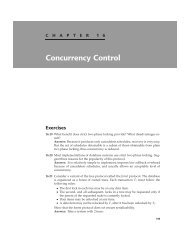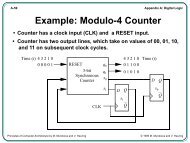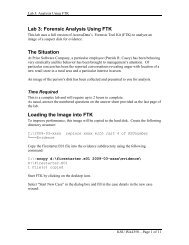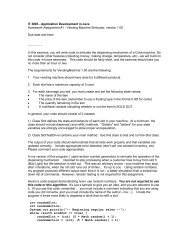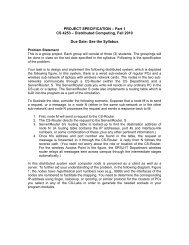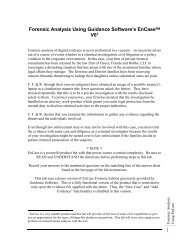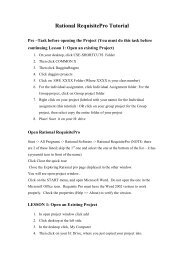You also want an ePaper? Increase the reach of your titles
YUMPU automatically turns print PDFs into web optimized ePapers that Google loves.
DRAFT, February 18, 2003, Page 54<br />
UML diagram. After checking the items you want excluded (or not), click the OK button, which should<br />
close the dialog. Now click the Update button in the upper right corner of the UML window. This should<br />
include all JDK classes (the gray boxes) in the diagram. This is shown in Figure 40 after the JDK classes<br />
have been dragged around. To remove them from the diagram, you would need to turn on the exclude<br />
option and update the diagram again. If you want to leave them in the diagram but not display them see<br />
the next paragraph. For more information see UML Settings in the Reference section.<br />
Making objects visible in the diagram - On the UML window menu, click on View – Visible Objects,<br />
then check or uncheck the items on the list as appropriate. For example, for the JDK classes and/or<br />
other classes outside the project to be visible, External References must be checked ON. Clicking<br />
(checking) ON or OFF any of the items on the Visible Objects list simply displays them or not, and their<br />
previous layout is retained when they are redisplayed. In general, you probably want all of the items on<br />
the list checked on as shown in Figure 40. Note that if items have been excluded from the diagram, as<br />
described above, then making them visible will have no effect since they are not part of the diagram. For<br />
more information see View Menu in the Reference section.<br />
Figure 40. Making objects visible





